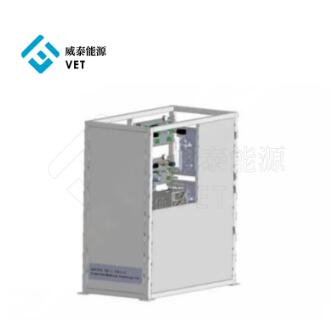Understanding the 10-Kilowatt Water Electrolysis Hydrogen Production Test System
2024-08-20
Introduction
As the world increasingly shifts towards renewable energy, hydrogen production is gaining attention as a clean and sustainable energy source. A key technology in this space is water electrolysis, where electricity is used to split water into hydrogen and oxygen. Among various systems available, the 10-kilowatt (kW) water electrolysis hydrogen production test system stands out for its potential to produce hydrogen efficiently on a relatively small scale. In this blog, we’ll explore the basics of this system, its components, and why it’s crucial for advancing hydrogen as a mainstream energy source.
What is a 10-Kilowatt Water Electrolysis Hydrogen Production Test System?
A 10-kW water electrolysis hydrogen production test system is designed to produce hydrogen by using electrical energy to break down water (H₂O) into hydrogen (H₂) and oxygen (O₂). The "10-kilowatt" refers to the system's power capacity, meaning it can handle an energy input of 10 kW. This size is typically used for experimental and research purposes, allowing scientists and engineers to test various parameters, optimize processes, and scale up for larger systems.
Components of the System
1. Electrolyzer: The heart of the system where water splitting occurs. The electrolyzer contains electrodes that facilitate the electrochemical reactions, separating water into hydrogen and oxygen.
2. Power Supply: Provides the necessary electrical energy to the electrolyzer. The power supply must be stable and capable of delivering up to 10 kW of electricity, often derived from renewable sources such as solar or wind.
3. Water Supply: Pure water is required for efficient electrolysis. The system typically includes a water purification unit to remove impurities that could affect the reaction.
4. Gas Collection System: After the water is split, the hydrogen and oxygen gases need to be collected separately. The system includes gas collection chambers and storage units for this purpose.
5. Control System: Monitors and controls the operation of the electrolyzer, including temperature, pressure, and current flow, to ensure optimal performance and safety.
Applications and Significance
The 10-kW water electrolysis hydrogen production test system is crucial for research and development in the hydrogen energy field. It allows researchers to:
- Experiment with Different Materials: By testing various electrode materials, scientists can find more efficient and cost-effective solutions for large-scale hydrogen production.
- Optimize Energy Efficiency: The system provides a controlled environment to explore ways to reduce the energy required for water electrolysis, making hydrogen production more sustainable.
- Develop Scalable Technologies: Insights gained from this system can be applied to design larger, commercial-scale hydrogen production plants, contributing to the broader adoption of hydrogen as a clean energy source.
Conclusion
The 10-kW water electrolysis hydrogen production test system plays a pivotal role in the advancement of hydrogen technology. By enabling precise control and experimentation, it helps pave the way for more efficient, cost-effective, and scalable hydrogen production methods. As we continue to seek alternatives to fossil fuels, such systems will be at the forefront of driving the hydrogen economy forward.



